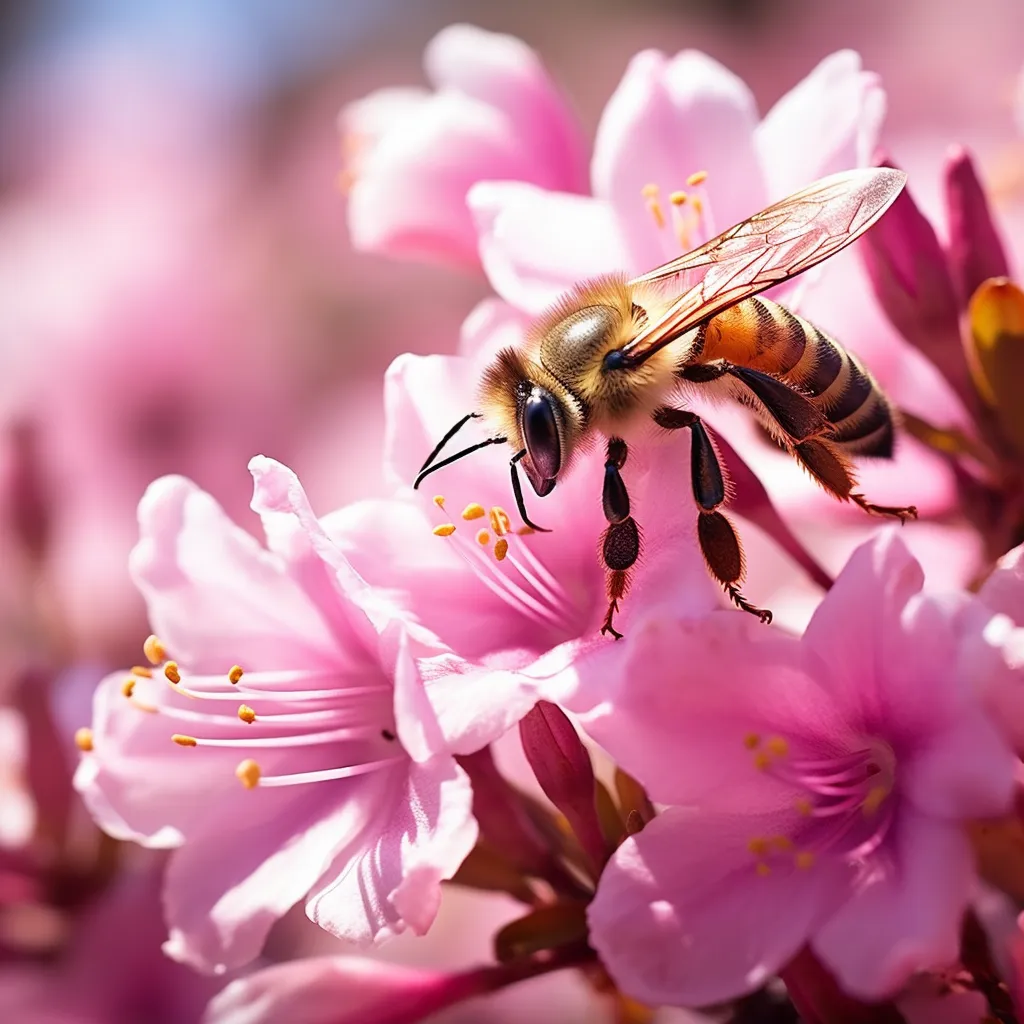Story of Day :
Contents
Rhododendron Wee Bee Plant Care Tips
Are you looking for a beautiful and vibrant addition to your garden? Look no further than the Rhododendron Wee Bee! This compact shrub offers stunning blooms that will add a burst of color to any landscape.
In this article, we will provide you with some essential care tips to ensure that your Rhododendron Wee Bee thrives and remains healthy.
Choosing the Right Location
The first step in caring for your Rhododendron Wee Bee is selecting the perfect location in your garden.
These plants thrive in well-drained soil and partial shade.
Avoid planting them in areas with full sun exposure, as this can scorch their delicate leaves.
- Choose a spot that receives morning sunlight and afternoon shade.
- Avoid areas close to trees or large shrubs, as they can compete for nutrients and water.
- Ensure proper air circulation around the plant by providing enough space between other plants.

Suitable Soil Conditions
The next step is preparing the right soil conditions for your Rhododendron Wee Bee.
These plants prefer acidic soil with a pH level between 4.5 and 6.0.
If your soil is alkaline, consider amending it before planting by adding organic matter such as peat moss or compost.
- Avoid heavy clay soils that retain too much moisture, as they can lead to root rot.
- If necessary, improve drainage by adding sand or perlite to the soil mixture.
Watering Requirements

Maintaining proper moisture levels is crucial for the health of your Rhododendron Wee Bee.
These plants require regular watering, especially during dry periods or when newly planted.
- Water deeply and thoroughly, ensuring that the water reaches the roots.
- Avoid overwatering, as it can lead to root rot.
Check the soil moisture level before watering again.
- Mulch around the base of the plant to help retain moisture and regulate soil temperature.
Fertilizing Tips
Providing adequate nutrients is essential for promoting healthy growth and abundant blooms in your Rhododendron Wee Bee.
Fertilize your plants in early spring before new growth begins.

- Use a slow-release fertilizer specifically formulated for acid-loving plants like rhododendrons.
- Avoid high-nitrogen fertilizers, as they can promote excessive foliage growth at the expense of flower production.
- Follow package instructions for application rates and timings carefully to avoid over-fertilization.
Pruning Techniques
To maintain a compact shape and encourage better air circulation, occasional pruning is necessary for your Rhododendron Wee Bee.
Prune immediately after flowering while being mindful not to remove next year’s flower buds.
- Remove any dead or damaged branches by cutting them back to healthy wood using sharp sterilized pruners.
- Avoid heavy pruning or shaping cuts that can reduce blooming potential.
Clean up fallen leaves from around the base of the plant regularly to minimize disease risks.
If needed, selectively thin out crowded areas to improve airflow within the plant canopy.

Pest and Disease Control
Despite being generally hardy, Rhododendron Wee Bee can still face certain pest and disease issues.
Regular monitoring and timely intervention are crucial to keep your plants healthy.
- Monitor for common pests such as aphids, spider mites, or scale insects.
If detected, use appropriate insecticides or natural remedies to control the infestation.
- Avoid overhead watering that can promote the spread of fungal diseases.
Practice good garden hygiene by removing fallen leaves or debris promptly.
Watch out for signs of fungal diseases like powdery mildew or root rot.
Apply fungicides as preventative measures or treat affected plants.
In Summary
The Rhododendron Wee Bee is a stunning addition to any garden with its vibrant blooms and compact size.
By selecting the right location with partial shade, ensuring well-drained acidic soil conditions, providing adequate water and nutrients, regular pruning, and monitoring for pests and diseases – you can enjoy a healthy and beautiful Rhododendron Wee Bee in your garden for years to come!